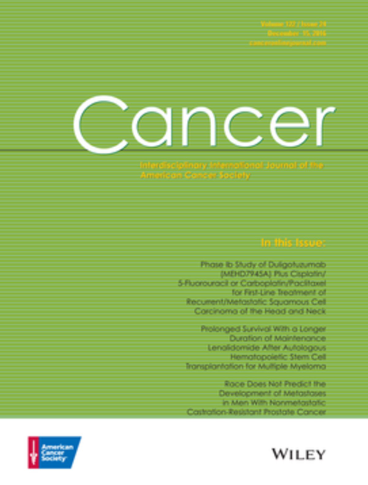Feasibility of a cancer screening program using multicancer early detection testing and whole-body magnetic resonance imaging in a high-risk population
Abstract
Background
The authors assessed the feasibility, acceptability, and impact on cancer worry of a cancer screening program using multicancer early detection (MCED) tests and whole-body magnetic resonance imaging (WBM) in individuals at high cancer risk because of family history or germline variants in cancer-susceptibility genes.
Methods
This prospective trial enrolled participants aged 50 years and older who had a significant family history of cancer or a cancer-susceptibility gene variant. Participants underwent noncontrast WBM and MCED testing. The results were shared with participants, and further imaging or consultations were conducted as needed. Surveys assessing anxiety, cancer worry, and acceptability of the intervention were completed at baseline and 6 months after testing.
Results
One hundred participants were enrolled: 98 completed both WBM and MCED testing, and 89 completed their 6-month follow-up. The median age of participants was 62 years (range, 51–83 years), and 64% were women. Four participants (4%) were diagnosed with cancer based on WBM findings and subsequent work-up, and all four underwent surgical resection. Two intraductal papillary mucinous neoplasms of the pancreas were detected and are being monitored. MCED testing was positive in four participants, none of whom had suspicious findings on magnetic resonance imaging. One participant with a JAK2 mutation and thrombocytosis is under monitoring for potential hematologic malignancy. Sixty-two participants (85%) somewhat/strongly agreed that study participation reduced cancer worry. Composite Cancer Worry Scale scores demonstrated decreased worry at 6 months compared with baseline (51% vs. high worry in 69%; p < .001).
Conclusions
MCED and WBM testing were feasible, acceptable, and were associated with decreased cancer worry at 6 months (clinical trials registration: NCT05868486).

 求助内容:
求助内容: 应助结果提醒方式:
应助结果提醒方式:


